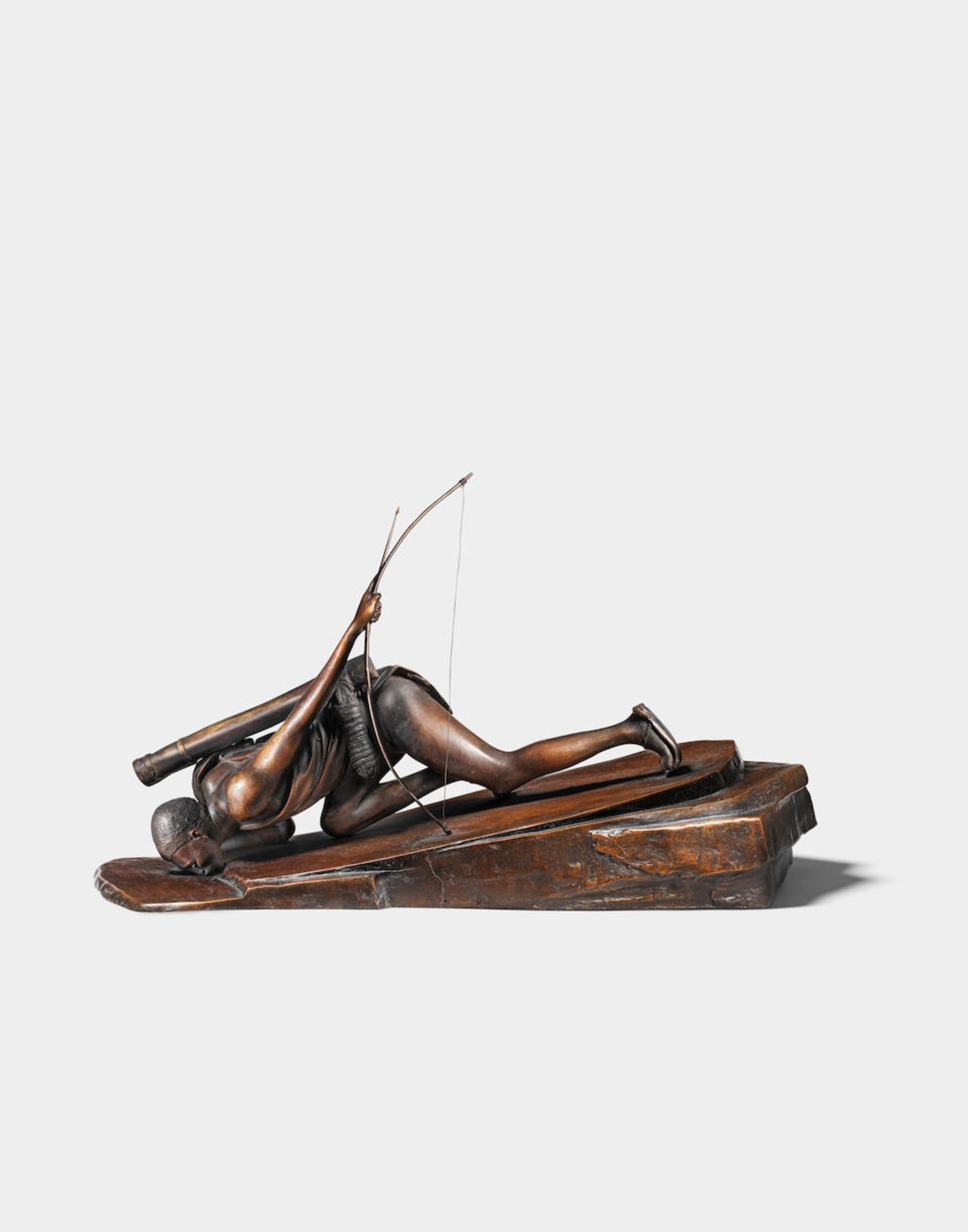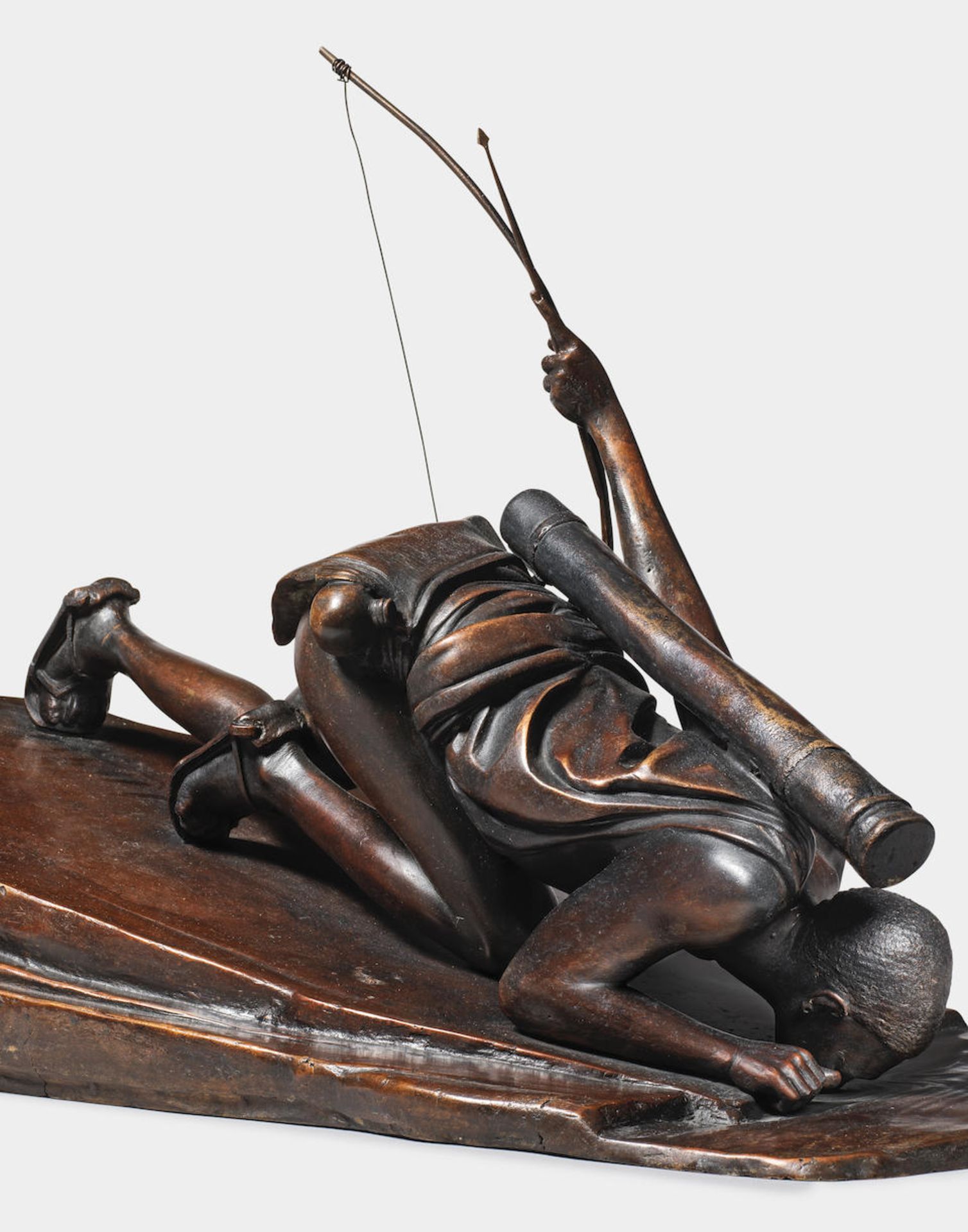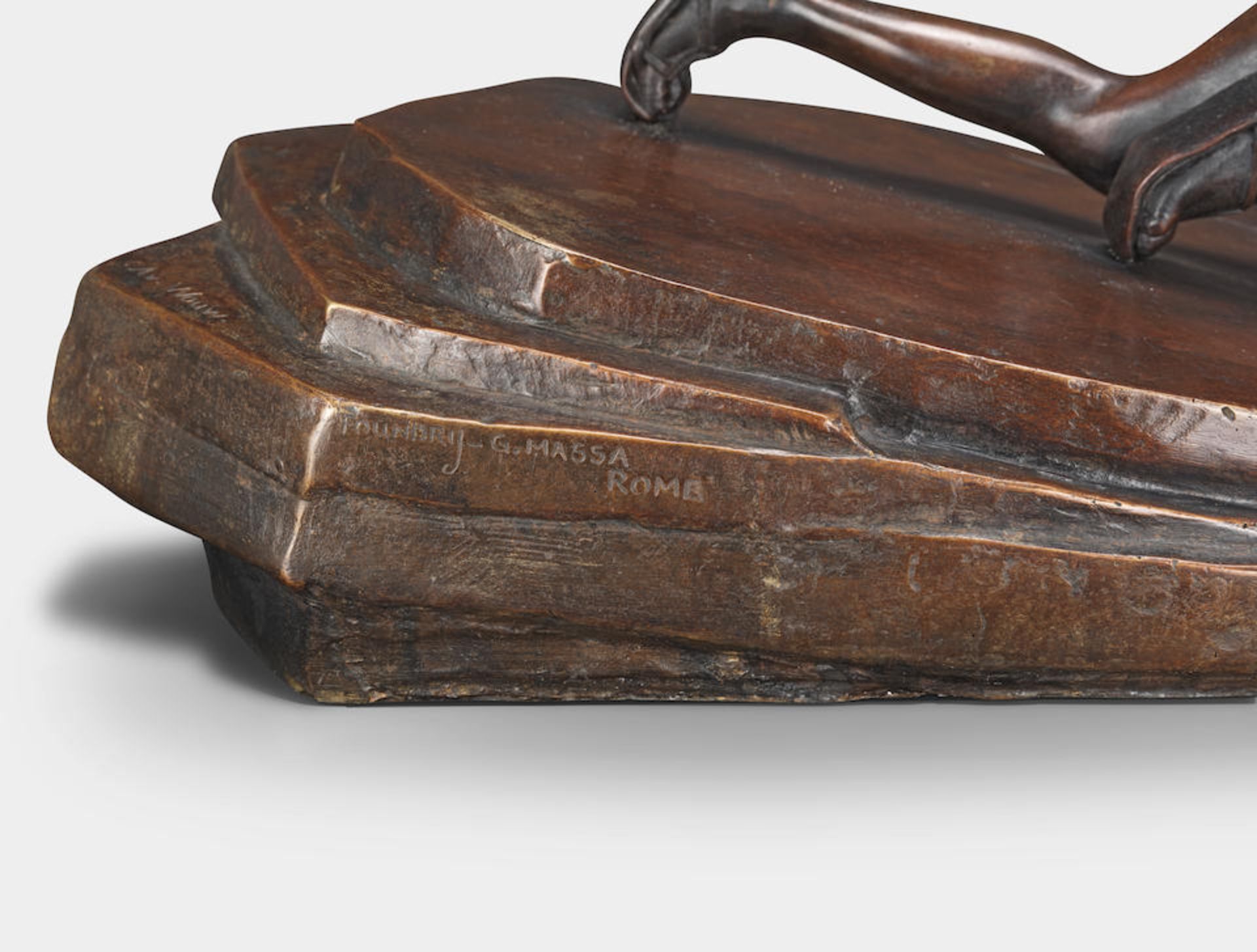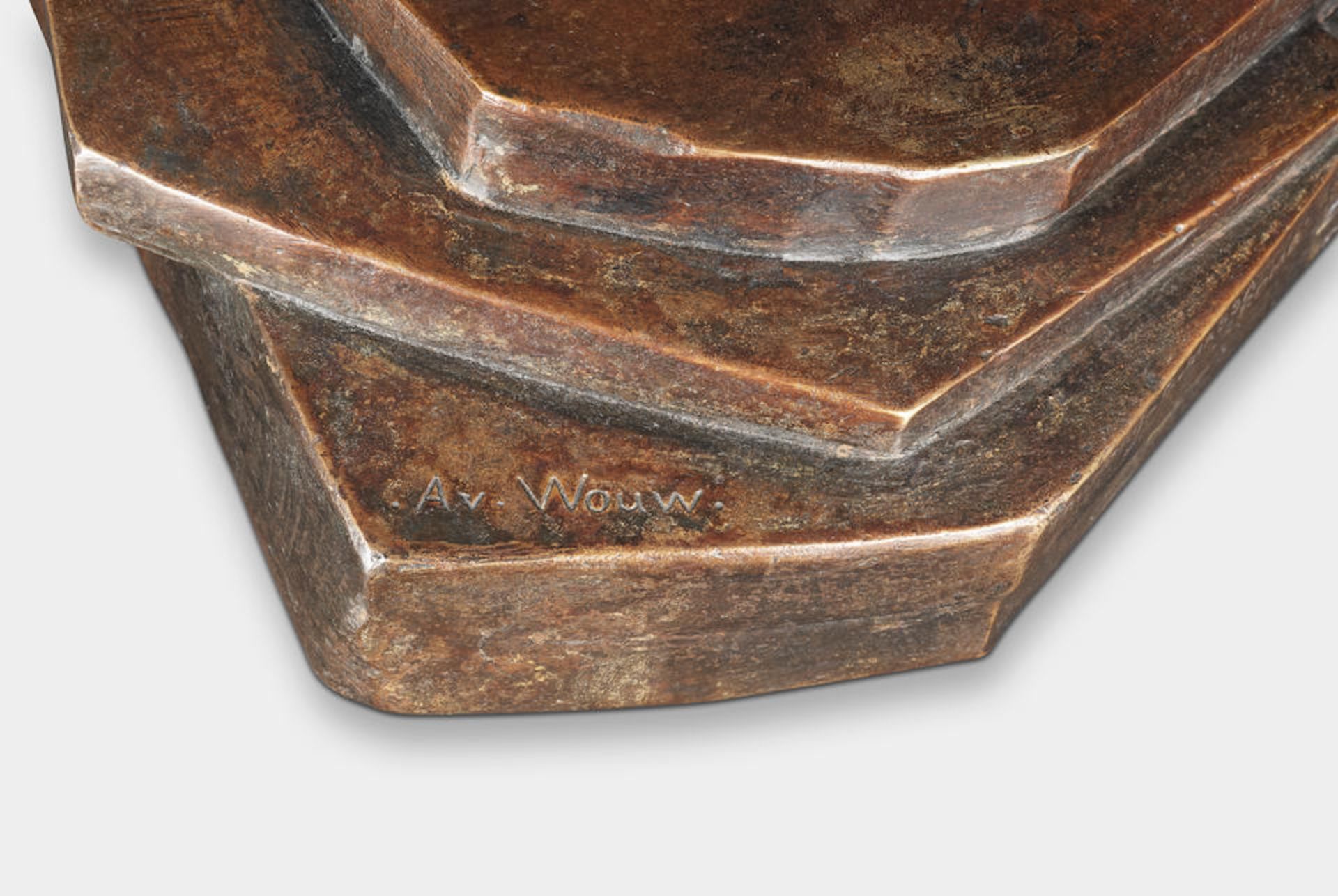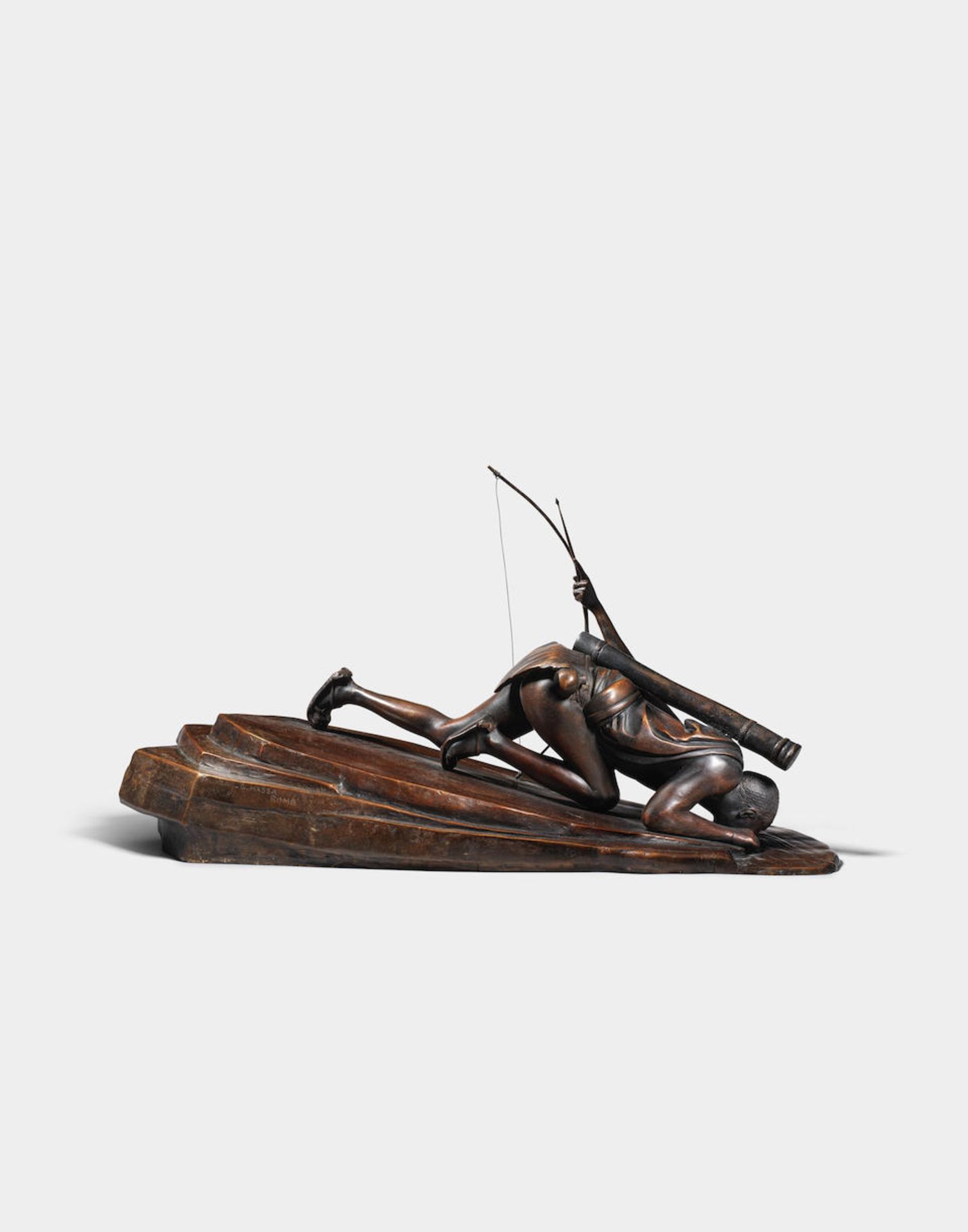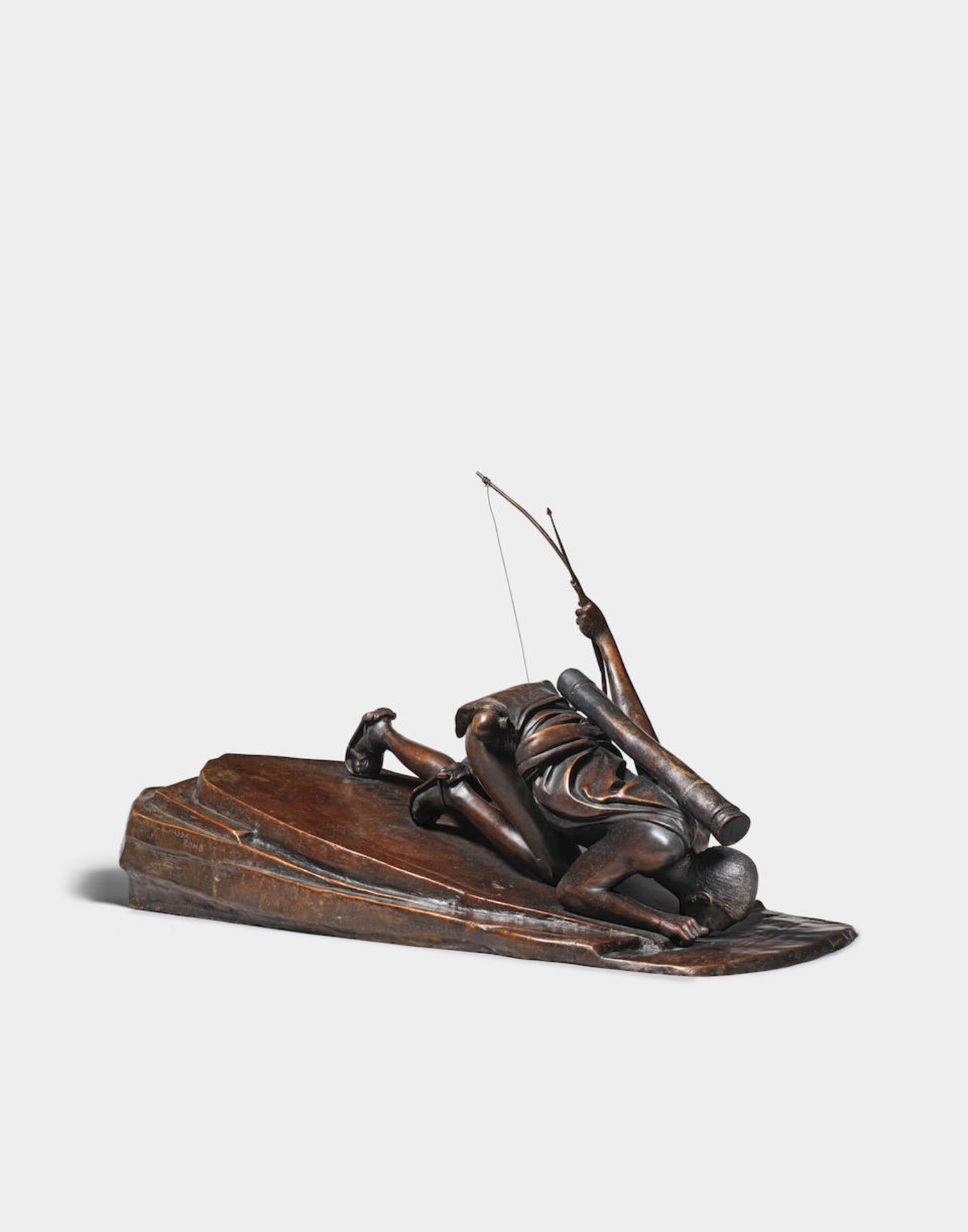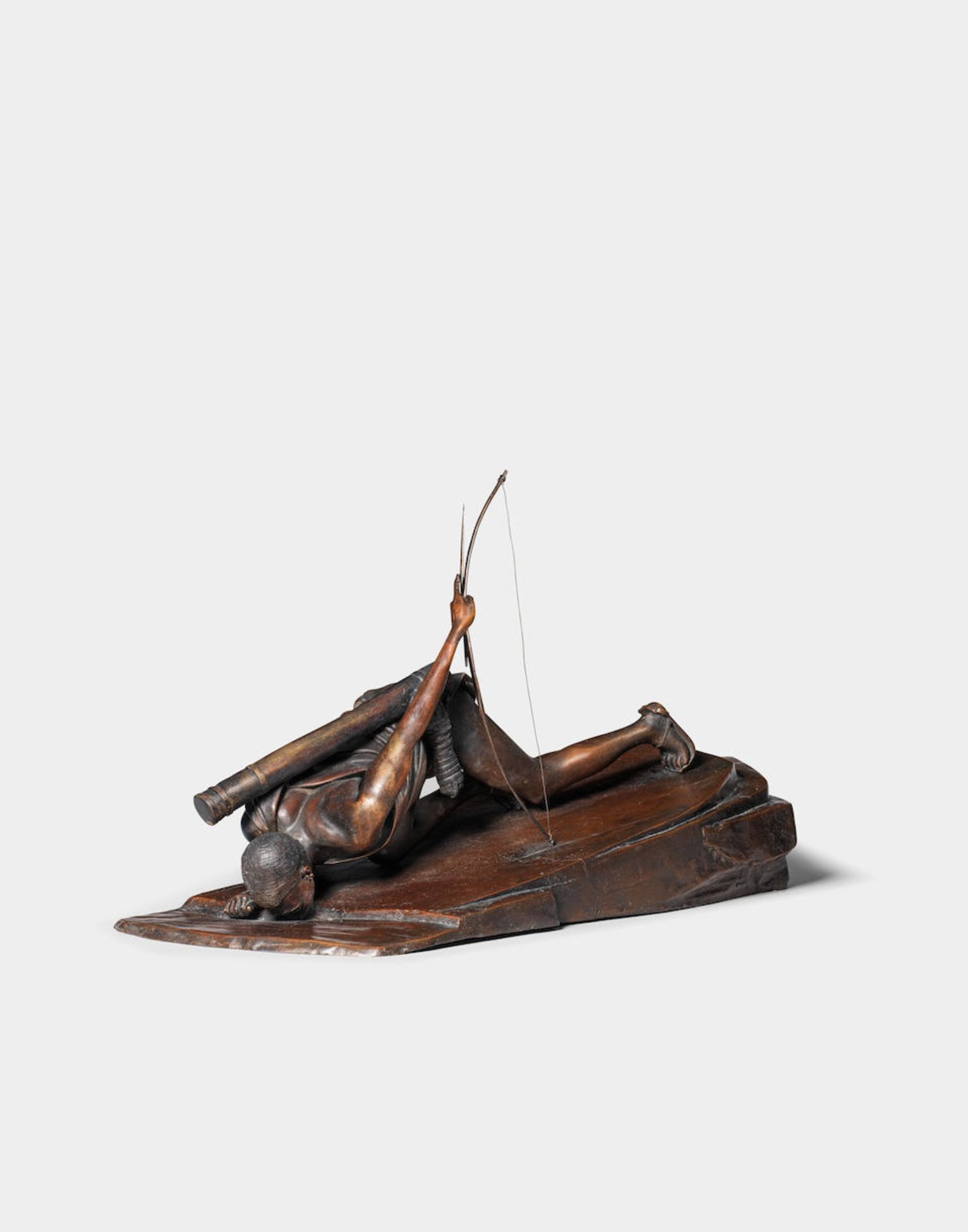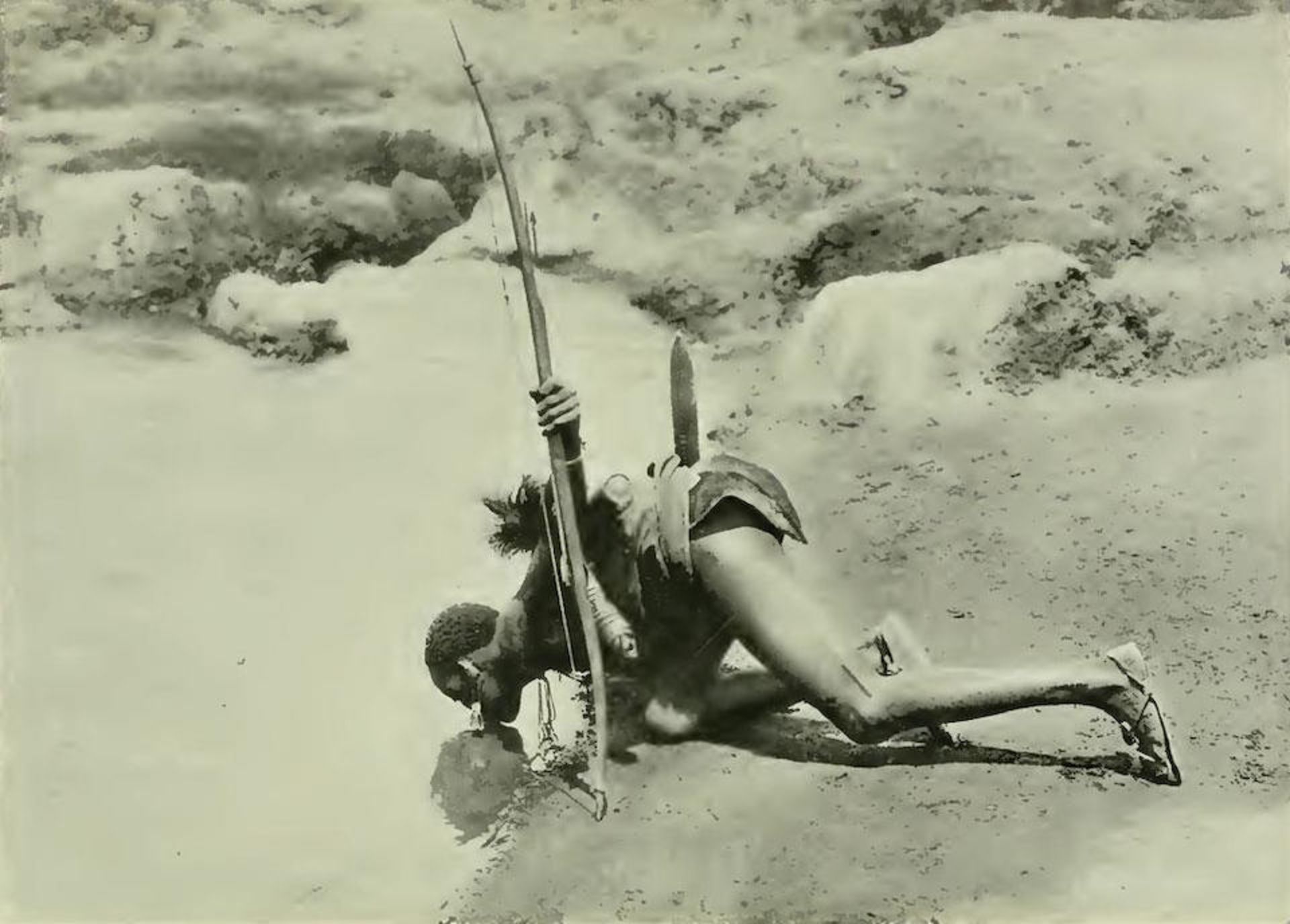1
Anton van Wouw (South African, 1862-1945) Andorobo (Hunter drinking) 71 x 32 x 36cm (27 15/16 x ...
Anton van Wouw (South African, 1862-1945) Andorobo (Hunter drinking) signed 'A v Wouw' (back left) and inscribed 'Foundry - G.Massa / Rome' (lower left) bronze 71 x 32 x 36cm (27 15/16 x 12 5/8 x 14 3/16in) Footnotes: Provenance Acquired in East London c.1940; A private UK collection; Bequeathed to the current owner. Literature A. E. Duffey, Anton Van Wouw, The Smaller Works, (Pretoria: Protea Book House, 2008), p. 68-69. (illustrated), (similar cast). Jacques Michau, Anton Van Wouw, 1862-1945, (Johannesburg: The Everard Read, 2009), p. 14-15 & 21, (similar cast). Anton van Wouw called this work Andorobo, which was a hunting group that lived in modern day Uganda. He composed the work from image he found in a book published in 1902 on The Uganda Protectorate (pictured). Other versions of the present bronze are sometimes titled, Hunter Drinking Water (1919) by Anton van Wouw. Equally, editions of the composition do vary, from the prominence of the ridge between the land and the water to the occasional addition and positions of the figures equipment and adornments. These variations seem to be dependant on the commission of the work, tailored to his client's wishes. Whilst there are variations of this work, that has indeed contributed to the rarity and originality of each work. Given that this work displays a ridge between the water's edge and the slope on which the figure kneels, it can be concluded that this is an early work given that later works are on a flatter surface with no incline. With no dagger, or adornments, the figure carries only a bow and pointed arrow in their left hand, a bundle of rope tied into a skein also falls on their left side, and a calabash container for poison on their right side. The composition is similar to The Dagger Smoker (1907) in it's downward facing figurative composition and it was this work was known to be Van Wouw's personal favourite. 'This work is sometimes called the Hunter Drinking Water but on invoices, the sculpture is titled Anderobo (sic). The Andorobo is a group of people from Uganda and Van Wouw created the sculpture from a photograph published in the book The Uganda Protectorate by Sir Harry Johnston in 1904. In Die Brandwag of October 1919 it is reported that Van Wouw was given a commission to create a life size black man lying on his stomach drinking water for a fountain.' (Chris de Klerk) It is interesting to consider why Van Wouw would decide to revisit and rework the present composition between the years 1907 and 1929. With the first cast created in the same year as his father Ludolf van Wouw's death, perhaps the personal affiliation with the context in which he created the first version of the present work made it a sentimentally prominent composition in his life. Furthermore, 1907 was a year of huge creative output for the artist, likely funded by inheritance from his father, and resulted in his first retrospective exhibition in 1908. Encapsulating Van Wouw's understanding of anatomy and textiles, the unison of the composition is a monumental display of his extensive sensibilities. Although his subject matter was inspired by his life and travels in Africa, Van Wouw cast his sculptures in Italy where he could be assured of a higher quality of casting and attention to detail. The current lot bears the mark of the Massa foundry in Rome. We are grateful to Gerard de Kamper and Chris de Klerk for their assistance in the compilation of the above footnote. Bibliography Henry Hamilton Johnston, The Uganda Protectorate, Vol. I. (London: Hutchinson & Co, 1902), p. 4. G. Moerdyk, 'Van Wouw as mens en vriend', Die Huisgenoot, (7 September 1945). For further information on this lot please visit Bonhams.com For further information about this lot please visit the lot listing
Anton van Wouw (South African, 1862-1945) Andorobo (Hunter drinking) signed 'A v Wouw' (back left) and inscribed 'Foundry - G.Massa / Rome' (lower left) bronze 71 x 32 x 36cm (27 15/16 x 12 5/8 x 14 3/16in) Footnotes: Provenance Acquired in East London c.1940; A private UK collection; Bequeathed to the current owner. Literature A. E. Duffey, Anton Van Wouw, The Smaller Works, (Pretoria: Protea Book House, 2008), p. 68-69. (illustrated), (similar cast). Jacques Michau, Anton Van Wouw, 1862-1945, (Johannesburg: The Everard Read, 2009), p. 14-15 & 21, (similar cast). Anton van Wouw called this work Andorobo, which was a hunting group that lived in modern day Uganda. He composed the work from image he found in a book published in 1902 on The Uganda Protectorate (pictured). Other versions of the present bronze are sometimes titled, Hunter Drinking Water (1919) by Anton van Wouw. Equally, editions of the composition do vary, from the prominence of the ridge between the land and the water to the occasional addition and positions of the figures equipment and adornments. These variations seem to be dependant on the commission of the work, tailored to his client's wishes. Whilst there are variations of this work, that has indeed contributed to the rarity and originality of each work. Given that this work displays a ridge between the water's edge and the slope on which the figure kneels, it can be concluded that this is an early work given that later works are on a flatter surface with no incline. With no dagger, or adornments, the figure carries only a bow and pointed arrow in their left hand, a bundle of rope tied into a skein also falls on their left side, and a calabash container for poison on their right side. The composition is similar to The Dagger Smoker (1907) in it's downward facing figurative composition and it was this work was known to be Van Wouw's personal favourite. 'This work is sometimes called the Hunter Drinking Water but on invoices, the sculpture is titled Anderobo (sic). The Andorobo is a group of people from Uganda and Van Wouw created the sculpture from a photograph published in the book The Uganda Protectorate by Sir Harry Johnston in 1904. In Die Brandwag of October 1919 it is reported that Van Wouw was given a commission to create a life size black man lying on his stomach drinking water for a fountain.' (Chris de Klerk) It is interesting to consider why Van Wouw would decide to revisit and rework the present composition between the years 1907 and 1929. With the first cast created in the same year as his father Ludolf van Wouw's death, perhaps the personal affiliation with the context in which he created the first version of the present work made it a sentimentally prominent composition in his life. Furthermore, 1907 was a year of huge creative output for the artist, likely funded by inheritance from his father, and resulted in his first retrospective exhibition in 1908. Encapsulating Van Wouw's understanding of anatomy and textiles, the unison of the composition is a monumental display of his extensive sensibilities. Although his subject matter was inspired by his life and travels in Africa, Van Wouw cast his sculptures in Italy where he could be assured of a higher quality of casting and attention to detail. The current lot bears the mark of the Massa foundry in Rome. We are grateful to Gerard de Kamper and Chris de Klerk for their assistance in the compilation of the above footnote. Bibliography Henry Hamilton Johnston, The Uganda Protectorate, Vol. I. (London: Hutchinson & Co, 1902), p. 4. G. Moerdyk, 'Van Wouw as mens en vriend', Die Huisgenoot, (7 September 1945). For further information on this lot please visit Bonhams.com For further information about this lot please visit the lot listing


















